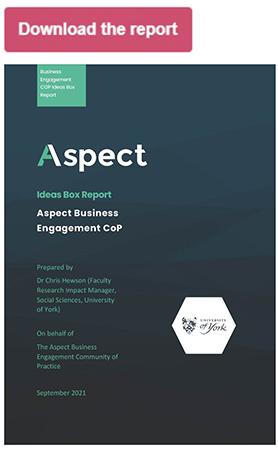This piece of work takes, as a starting point, the idea that underlying these issues are questions of how, at an institutional level, research development integrates with other knowledge exchange functions. However, before we are able to consider what an optimal support structure might look like, we are required to address perceived barriers expressed by the social sciences community.
This pilot project has produced a range of materials, grounded in the theme of surfacing opportunities through dialogue. These include:
- A summary of barriers to effective business engagement in the social sciences revealed within a range of surveys, workshops and discussions
- Key learning points, including initial thoughts on how this work could be rolled out across other HEIs
- Some visual materials to assist institutions in this process.
We found that the desire for academics to engage was present, yet often under-supported. This was linked to more general structural issues within HE knowledge exchange – including prioritisation, workload and misaligned support structures. We found that an important first step is the generation of both a wider KE literate culture, as well as a more focused facilitated space, where academics, university managers and external organisations can freely discuss areas where interests intersect.
Project Outputs:
The project outputs will be added below as they become available.
- Output 1: Blog Post – Author Chris Hewson (coming soon)
This blog considers the special status of business engagement and commercialisation in the social sciences and asks, what actions does an understanding of this status compel us to take?
- Output 2: Report – Author Chris Hewson
Taking learnings from our early experience of building a social sciences business engagement function from scratch, this report considers the barriers to business engagement in the social sciences, and charts the outlines of a support model for academics, considering how social sciences business engagement might better integrate with existing support structures.
- Output 3: Interactive Prezi (coming soon)
- Output 4: Short Animation





